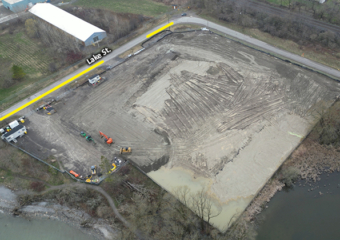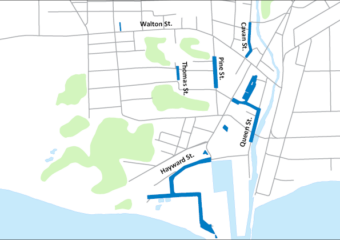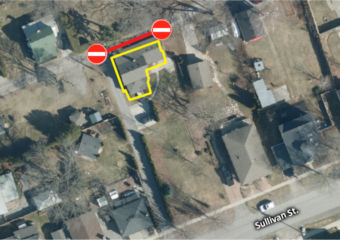Launched in 2011, the Port Hope Area Initiative (PHAI) has played an active role in the Port Hope and Port Granby communities. As a one-of-a-kind federal project, the PHAI has set the mark as an environmental cleanup across Canada and the world. At the recent licence hearing held by the Canadian Nuclear Safety Commission (CNSC) late last year, Canadian Nuclear Laboratories (CNL) used the opportunity to assess the last decade. Feedback by way of interventions received from the public were mainly supportive of the project while some intervenors wanted more information on timelines, impact to the environment; and access to testing information about public properties.
The following addresses these questions:
The PHAI is a very complex project that is guided by discovery. New information about work sites can come to light at any time affecting the safety and compliance of the work. There is therefore the need for a level of oversight not usually found on other construction projects. Skilled staff and contractors work to ensure that the PHAI remains compliant with all regulations. To execute this project, there is need for accurate planning, flexible project implementation all while ensuring the safety of the workers, the community and the environment. Ongoing environmental monitoring including ground and surface water testing, odour, dust and noise monitoring helps us all be safe.
As environmental stewards, CNL is committed to protecting the natural environment, including trees while undertaking PHAI activities. Early on, CNL confirmed through testing that there is no uptake of historic low-level radioactive waste (LLRW) in the trees in Port Hope. As a result trees removed in order to facilitate the cleanup are often reused in a sustainable manner. Property owners for example, can reuse wood from felled trees for firewood or for woodworking projects. Donations were also made to a local high school in Port Hope for use in their wood work classes. Additionally, CNL staff and contractors continuously monitor work sites for wildlife and their habitats, which are avoided during work activities. A Species at Risk database has been developed for use by CNL with identified plants and animals monitored for impact by cleanup and construction work.
The testing of properties in Port Hope is necessary to confirm the absence or presence of historic LLRW. The results of this testing with over 25,000 soil samples, confirm that the number of privately owned properties and road allowances to be remediated totals over 1200. This change in the anticipated number of properties to be cleaned up may lengthen the time and budget allocated for the PHAI. Every effort is being taken to manage the budget and schedule. While the anticipated volume of waste for the Port Hope Project has increased, the above ground mound designed for long-term storage can safely accommodate the additional contaminated materials and soil.
Property owners are reminded they can speak with a communications officer to find out the status of testing on their properties. In the interest of public safety, residents can also request copies of results available for road allowances. Staff members are available to review testing information with property owners, their realtors or prospective buyers if they plan to sell.
CNL in Port Hope is open to the public at 25 Henderson Street for drop-in meetings or we can be reached at 905-885-0291 or [email protected] to provide answers to any questions that may arise.




